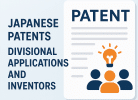by Keiko K. Middleton, IP Technical Advisor, and Taro Yaguchi, Japanese Patent Attorney
Outside Japan, the existence of Japan’s strict rules as to the contents of a Certificate of Assignment are not well-known. The Certificate of Assignment is a document to be filed to record an ownership change of an intellectual property right (patent, trademark, and design, either registered or pending). For instance, when a Japanese patent or a pending patent application is transferred from one person or entity to another, a properly prepared and executed Certificate of Assignment has to be filed with the Japan Patent Office (JPO) to change the current patent owner or applicant.The steps to follow in order to record a Certificate of Assignment differ from country to country. In Japan, the JPO imposes strict requirements on the contents of the Certificate of Assignment. This article is prepared in an attempt to illustrate key elements of those requirements for non-Japanese legal professionals or individuals, who are in need of recording assignments in Japan. To that end, indicated below is a summary of the key features of an acceptable Certificate of Assignment to be used in Japan.
Strict Rules for Assignments Imposed by the Japan Patent Office
Requirement I: Original Document
The Japan Patent Office requires an original, signed Certificate of Assignment to be filed. A photocopy of an assignment filed abroad cannot be used for submission in Japan. An exception can be made if the copy is certified by a notary. In such a case, the copy must state that ”it is a true copy of the original…”
Requirement II: Japanese Patent Number and/or Patent Application Number
A Certificate of Assignment to be filed with the JPO must pertain to a Japanese patent case, with its Japanese patent number or application number clearly indicated. Without these numbers, the JPO will not accept a Certificate of Assignment. For your reference, the Japanese numbering system is as follows:Registered Patents:
-NNNNNNN (7-digit serial number)Patent Applications before January 2000:
-YY-NNNNNN(YY = Imperial Year; NNNNNNN = a serial number made up of 6 digitsPatent Applications after January 2000:
-YYYY-NNNNNN(YYYY = Western Year; NNNNNN = a serial number made up of 6 digits)
Requirement III: Names and Addresses
A very important, yet little known fact, is that the JPO requires that a Certificate of Assignment include names and addresses of both assignor(s) and assignee(s) in the exact same way and format that match the information on file at the JPO. In Japan, once an application is filed, the applicant information is recorded with its name and address as indicated on an application. The JPO, then, issues an Applicant’s ID Number. The ID number itself does not have to be included in a Certificate of Assignment. It is, however, necessary to know how the name and address are recorded along with that ID number, so that a Certificate of Assignment can include the names and addresses in a proper manner.If a Certificate of Assignment includes names and addresses in a way inconsistent to the JPO’s record, a Request for Changing a Name/Address has to be filed to resolve the inconsistency. This will result in extra charges of fees imposed by the JPO as well as a Japanese patent attorney.
Requirement IV: Power of Attorney
Along with a Certificate of Assignment, a power of attorney has to be filed. For a pending patent application, a power of attorney from an assignee (new applicant) is required, but not from an assignor (original applicant prior to an assignment), as long as a Certificate of Assignment is signed by the assignor and is available for submission.For a granted patent, a power of attorney from both parties, -the assignor(s) and the assignee(s)-, are required, except where a Consent for Assignment Registration is signed.
Requirement V: Consent for Assignment Registration
A Consent for Assignment Registration is a document necessary for recordation of the change in a patent ownership in Japan when a power of attorney from an assignor is not available. Instead of signing a power of attorney, the assignor signs a Certificate of Assignment as well as a Consent for Assignment Registration (they are often prepared as one document), and the signed document is filed by an attorney on behalf of the assignee.This document is required only for patents registered at the JPO, and not necessary for recording an applicant change for a pending application at the JPO.
———————————————————————-
Lastly, it is important to note that, an assignment has legal effect only if it is filed and recorded at the Japan Patent Office (JPO). In other words, even if an assignment is created and executed in the United States, without preparing, signing, and filing a Certificate of Assignment with the JPO, it has no legal standing in Japan. For more information on filing a Certificate of Assignment, we strongly advise that you retain a Japanese patent attorney. (updated 9/20/2010)






